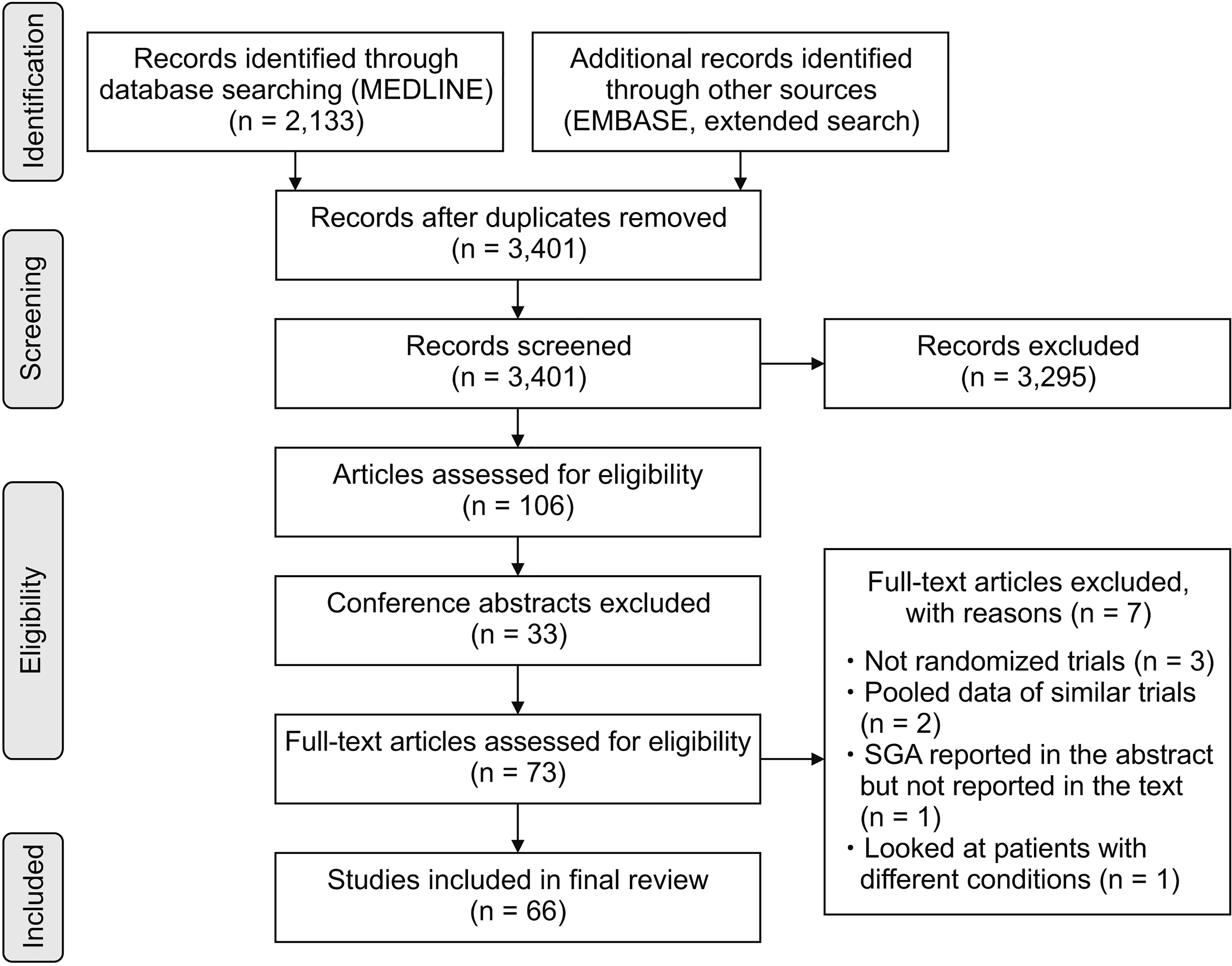1. Ospina M, Harstall C. 2002. Prevalence of chronic pain: an overview. Alberta Heritage Foundation for Medical Research;Edmonton:
2. Elzahaf RA, Tashani OA, Unsworth BA, Johnson MI. 2012; The prevalence of chronic pain with an analysis of countries with a Human Development Index less than 0.9: a systematic review without meta-analysis. Curr Med Res Opin. 28:1221–9. DOI:
10.1185/03007995.2012.703132. PMID:
22697274.

3. Venekamp RP, Rovers MM, Hoes AW, Knol MJ. 2014; Subgroup analysis in randomized controlled trials appeared to be dependent on whether relative or absolute effect measures were used. J Clin Epidemiol. 67:410–5. DOI:
10.1016/j.jclinepi.2013.11.003. PMID:
24508145.

4. Sun X, Briel M, Busse JW, You JJ, Akl EA, Mejza F, et al. 2012; Credibility of claims of subgroup effects in randomised controlled trials: systematic review. BMJ. 344:e1553. DOI:
10.1136/bmj.e1553. PMID:
22422832.

6. Byth K, Gebski V. 2004; Factorial designs: a graphical aid for choosing study designs accounting for interaction. Clin Trials. 1:315–25. DOI:
10.1191/1740774504cn026oa. PMID:
16279257.

7. McCormack R, Lamontagne M, Vannabouathong C, Deakon RT, Belzile EL. 2017; Comparison of the 3 different injection techniques used in a randomized controlled study evaluating a cross-linked sodium hyaluronate combined with triamcinolone hexacetonide (Cingal) for osteoarthritis of the knee: a subgroup analysis. Clin Med Insights Arthritis Musculoskelet Disord. 10:1179544117725026. DOI:
10.1177/1179544117725026. PMID:
28839449. PMCID:
PMC5560514.

8. Saragiotto BT, Maher CG, Moseley AM, Yamato TP, Koes BW, Sun X, et al. 2016; A systematic review reveals that the credibility of subgroup claims in low back pain trials was low. J Clin Epidemiol. 79:3–9. DOI:
10.1016/j.jclinepi.2016.06.003. PMID:
27297201.

10. Sun X, Briel M, Walter SD, Guyatt GH. 2010; Is a subgroup effect believable? Updating criteria to evaluate the credibility of subgroup analyses. BMJ. 340:c117. DOI:
10.1136/bmj.c117. PMID:
20354011.

11. Oxman A, Guyatt G, Cook D, Montori V. Guyatt G, Rennie D, editors. 2002. Summarizing the evidence. Users' guides to the medical literature: a manual for evidence-based clinical practice. AMA Press;Chicago: p. 155–173.
12. Akl EA, Sun X, Busse JW, Johnston BC, Briel M, Mulla S, et al. 2012; Specific instructions for estimating unclearly reported blinding status in randomized trials were reliable and valid. J Clin Epidemiol. 65:262–7. DOI:
10.1016/j.jclinepi.2011.04.015. PMID:
22200346.

13. Hosmer DW, Lemeshow S. 1980; Goodness of fit tests for the multiple logistic regression model. Commun Stat Theory Methods. 9:1043–69. DOI:
10.1080/03610928008827941.

14. Landis JR, Koch GG. 1977; The measurement of observer agreement for categorical data. Biometrics. 33:159–74. DOI:
10.2307/2529310. PMID:
843571.

15. Harris RJ, Quade D. 1992; The minimally important difference significant criterion for sample size. J Educ Stat. 17:27–49. DOI:
10.3102/10769986017001027.

16. Lachenbruch PA. 1988; A note on sample size computation for testing interactions. Stat Med. 7:467–9. DOI:
10.1002/sim.4780070403. PMID:
3368673.

17. Mistry D, Patel S, Hee SW, Stallard N, Underwood M. 2014; Evaluating the quality of subgroup analyses in randomized controlled trials of therapist-delivered interventions for nonspecific low back pain: a systematic review. Spine (Phila Pa 1976). 39:618–29. DOI:
10.1097/BRS.0000000000000231. PMID:
24480951.
18. Rothwell PM. 2005; Treating individuals 2. Subgroup analysis in randomised controlled trials: importance, indications, and interpretation. Lancet. 365:176–86. DOI:
10.1016/S0140-6736(05)17709-5. PMID:
15639301.
19. Sun X, Briel M, Busse JW, You JJ, Akl EA, Mejza F, et al. 2011; The influence of study characteristics on reporting of subgroup analyses in randomised controlled trials: systematic review. BMJ. 342:d1569. DOI:
10.1136/bmj.d1569. PMID:
21444636. PMCID:
PMC6173170.

20. Barton S, Peckitt C, Sclafani F, Cunningham D, Chau I. 2015; The influence of industry sponsorship on the reporting of subgroup analyses within phase III randomised controlled trials in gastrointestinal oncology. Eur J Cancer. 51:2732–9. DOI:
10.1016/j.ejca.2015.08.030. PMID:
26608121.





 PDF
PDF Citation
Citation Print
Print




 XML Download
XML Download